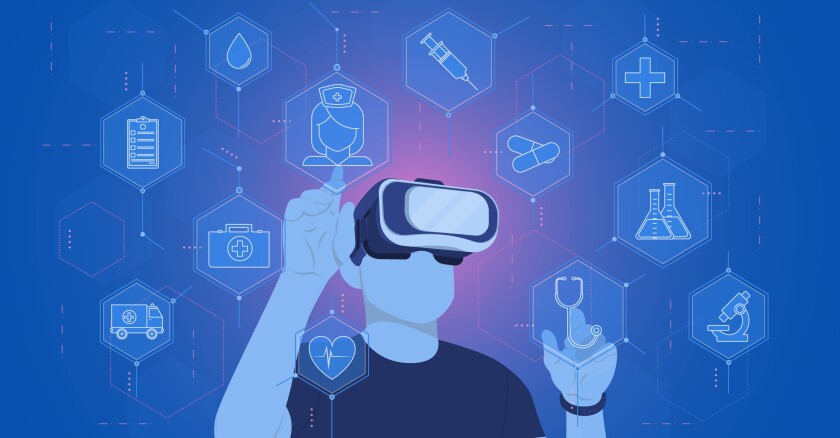Walter Greenleaf, a neuroscientist and medical technology developer from Stanford University whose work focuses on digital medicine and VR technology, said the use of virtual reality tools in general is already commonplace in medical and mental health fields today. He said AR/VR tools simulate a variety of difficult medical scenarios to give both care providers and patients practice navigating the process. As one example, he said, AR/VR can be used for social-emotional training, such as simulating scenarios in which a practitioner would have to deliver unpleasant news to patients.
"It's actually easier to list where VR has not [been used] because it's been used in so many places. The Veterans Administration, for example, has rolled it out to more than 160 sites. They've trained more than 2,000 clinicians ... so it’s pretty rapid adoption, ranging from neuro-rehabilitation for traumatic brain injuries to helping with anxiety and post-traumatic stress, to helping with addictions to treating [things like] conduct disorder and helping with a whole variety of different clinical implications," he said, adding that simulations have been used to teach “soft skills" such as having critical conversations in clinical practice.
Greenleaf said some AR/VR programs can also familiarize health science students with certain medical devices and tools before they hit the field.
“You don't have to travel and spend the weekend at a simulation or training center," he said. "You can learn at your home or at your clinic, how to use a new medical device [with the help of] a large library of applications."
The move toward using AR/VR tools for nursing and health science training has been in the making for at least a few years now, amid the growing popularity of telehealth options that allow practitioners to work with more patients regardless of geographical constraints, and students to train themselves to work with diverse patient populations and gain experience with medical challenges. For instance, in 2016, researchers from the University of Southern California used a $450,000 grant from the National Institutes of Health to develop and test a virtual reality-based program designed for walking rehabilitation in patients with Parkinson’s disease.
Marientina Gotsis, a professor at the University of Southern California and director of the university’s Creative Media and Behavioral Health Center, said that while current AR/VR platforms and their content leave some room for improvement, the technology is poised to play a bigger role in facilitating training and treatment as it advances.
"We've always known that health care is one of the most promising areas for growth in VR, and it's been used in training, from surgical training to any other kind of technical training related to health care," she said. "It’s been used in non-surgical procedural training like triage and assessment methods, and other things that require teamwork."
With interest from medical students growing, researchers at the University of California-San Francisco (UCSF) School of Nursing announced in May the development of a program to further evaluate how useful VR tools can be for training advanced-practice nursing students. Elizabeth Gatewood, assistant dean of education technology and innovation at UCSF, said the gamification element of VR, and the repetition it allows, helps students improve how they approach real-world medical scenarios.
She said by providing an opportunity for students to practice high-stakes or sensitive procedures with less risk, students can gain confidence and skills before training in the field, adding that universities have been placing more emphasis in recent years on this kind of hands-on competency-based learning in general.
“There are so many [tools now] that have a library of cases where they can say, ‘OK, our students haven't seen X, Y and Z in person, let's put them in a virtual reality scenario where they experience it so they're actually prepared for it when they see it in real life,’” she said. “Similarly, it really allows for high-stakes procedures or sensitive procedures where you really want students to have more practice so they can go through it as many times as they need to, to really get comfortable and confident in the scenario before they actually experience it with a real-life person.”









